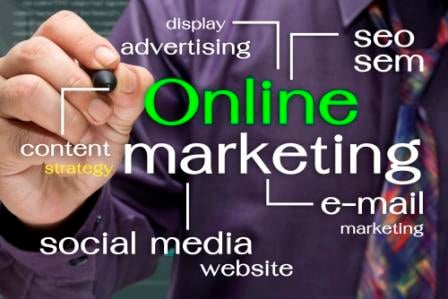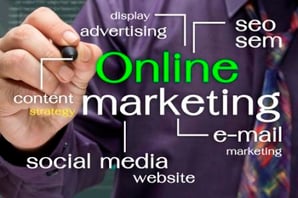4 Key Differences Between SEO and Inbound Marketing

 How much do you know about the difference between SEO and inbound marketing? While much has been written about the distinctions between SEO and inbound marketing agencies, these points of differentiation only partially begin to tell the story. The real differences between SEO and inbound come down to the "daylight" between SEO best practices and inbound techniques that actually generate leads, increase conversion rates and ultimately lead to more sales.
How much do you know about the difference between SEO and inbound marketing? While much has been written about the distinctions between SEO and inbound marketing agencies, these points of differentiation only partially begin to tell the story. The real differences between SEO and inbound come down to the "daylight" between SEO best practices and inbound techniques that actually generate leads, increase conversion rates and ultimately lead to more sales.
Understanding the difference is critical to your online marketing efforts. In well-run marketing operations, SEO and inbound "play nice" together . SEO best practices complement and reinforce sales-focused inbound techniques. In less well-run operations, a poorly managed inbound effort or outdated SEO framework can sabotage overall marketing effectiveness and harm sales.
With that in mind, look to these four "SEO versus inbound marketing" distinctions for insight on what's working with your online marketing effort and what might need to be changed.
1. SEO Involves Some Technical Work
Although discussions of SEO tend to focus on easy-to-understand concepts like keywords and title tags, much of the nuts-and-bolts work of search engine optimization is technical. Some of the most important elements of SEO, including page load speed and ease of site navigation, require technical fixes that may be out of the reach of unspecialized content creators. Likewise, building the sitemaps favored by major search engines requires some technical knowledge.
While you don't have to have a four-year computer science degree to accomplish these SEO best practices, you do need to know more than the average small business owner does. In contrast, inbound revolves around understanding who your ideal buyers are, creating content that speaks to their needs and enticing them to move, hopefully all the way, through your sales funnel.
2. SEO Is About Driving Traffic
At the heart, SEO is a traffic-driving strategy that boosts a website's visibility in search results for relevant keywords and entices Internet users to step across its digital doorstep.
Although SEO has little in common with television or outdoor advertising, it's useful to think of the practice as a targeted version of these early-stage marketing efforts. By optimizing particular keywords for search engine algorithms, you can put your site in front of people who might otherwise never have come across it.
In many cases, they might not ever have heard of your company. Inbound is more about utilizing SEO to build awareness while also focusing on educating, converting and selling to visitors who are already past the "awareness" phase of the buyer's journey.
3. Inbound Marketing Is More Visual
Every few months, a key Google algorithm change prompts Internet marketing "experts" to crow that "SEO is dead." Such pronouncements are always wrong. SEO has been around since the dawn of the search engine and remains indispensable.
Then again, SEO is an ancient, by digital standards, concept that in many ways reflects the preferences and proclivities of an earlier age. Case in point: To a large extent, non-technical aspects of SEO revolve around the use and manipulation of text.
But today, more bandwidth, better connectivity and enhanced memory storage coalesce to make the modern Internet a very different beast. Many modern websites, particularly those employing mobile-ready or mobile-first designs, use more graphics, videos and other multimedia elements that were simply impossible for even the most advanced "Web 1.0" sites to support.
Because text is still critical to a website's overall search visibility, it's perfectly fine to employ modern SEO practices to drive traffic to your website. That said, even well-oiled SEO campaigns must be paired with comprehensive inbound marketing campaigns that utilize catchy graphics, videos and other non-textual elements to attract visitors, retain them and shepherd them through the buyer's journey.
4. Inbound Marketing Is a Broader Strategy Than SEO
The most fundamental difference between SEO and inbound marketing should be clear by now: Inbound describes a far broader and more inclusive marketing strategy than SEO.
It's useful to think of SEO as the solution to a specific set of related problems, all of which revolve around boosting a website's visibility and driving visitors, both first-timers and repeat arrivals, to a business's digital doorstep. Meanwhile, inbound is a broader, more visionary approach that bridges the gap between generating awareness and closing a sale.
In other words, inbound is ultimately a sales-focused strategy that takes responsibility for every aspect of the sales process, from first contact to post-sale follow-up. Although it plays a role in each stage of the buyer's journey, SEO is particularly useful for building awareness during the first stage of the journey. That makes it a particularly powerful tool for inbound marketers and reinforces the need for marketers to harmonize their SEO and inbound strategies.
Learn More About the Difference Between SEO and Inbound Marketing
If you can consistently keep these four differences between SEO and inbound marketing in mind, you'll find yourself on track for digital marketing success. But if you need some extra help, let us know. We can implement and run your Inbound Marketing campaign from start to finish. To learn more, click here.







